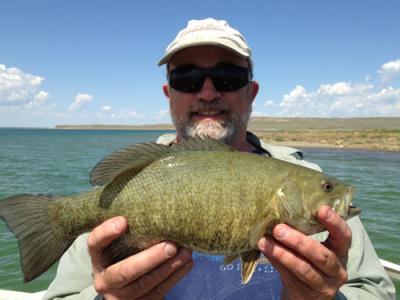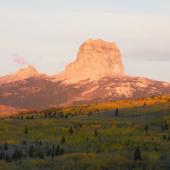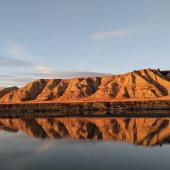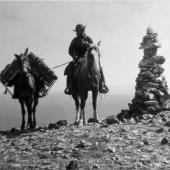Montana in 30 Years: FISHERIES
Interview with Bruce Rich of Montana Fish, Wildlife & Parks
Bruce Rich is the Fisheries Division Administrator for Montana Fish, Wildlife & Parks, a position he has held for five years. Before that he was the Regional Fisheries Manager for FWP in Bozeman for 14 years. He fishes every chance he gets and encourages others to do the same!
* * * *

What can you tell us about what fishing might be like in Montana in 2045?
I think fishing in Montana in 2045 is going to be great, at least as good as it is now. That said, if climate change continues in an overall warming trend, we may have more of some species (those that thrive in warmer water) and less of some others (especially those that require colder water). In 2013, anglers fished 3.5 million days in Montana, a new record.
I hope and anticipate that through adaptive management we will continue to provide a similar amount of angling opportunity and diversity three decades from now.
What will be the top three challenges to face Montana’s fisheries over the next 30 years, and what are plans for dealing with those challenges?
Aquatic invasive species (AIS) and illegal fish introductions continue to threaten our existing fisheries and aquatic ecosystems, so we are working very hard to protect our fisheries from these threats. Aquatic habitat degradation—both physical habitat and water quality and quantity. We put a lot of our effort into fighting these because if you don’t have water and habitat, you don’t have fish! Obtaining and providing adequate funding for our fisheries management, AIS prevention, and fishing access programs will continue to be a significant challenge.
How do you see the role of hatcheries changing over the next three decades?
We have been increasing our emphasis on urban fisheries and our use of hatchery fish to support those fisheries, because of the function they have in providing family fishing opportunities and recruiting youth anglers. That trend could continue. Similarly we’ve increased the role of our hatcheries in conserving native fish populations such as Yellowstone and Westslope cutthroat trout and Arctic Grayling; that’s likely to continue. Finally, it’s possible that if we are able to improve enough fish habitat in the next 30 years that we may be able to stock less sport fish into some non-urban waters as we develop more self-sustaining fisheries.

What changes might take place for fishing licenses for residents and non-residents?
We are already using a lot of new technology in our licensing, You can now buy your resident or non-resident license online anywhere, anytime. It’s likely we’ll eventually have electronic licenses that you can just look up on your mobile device to review it or show a game warden. One thing is for sure, license prices will go up over time, Our costs of doing business go up just like everyone elses do.
Where in the state is fishing likely to be more restricted? less restricted?
If our droughts continue or worsen we may need to provide relief to some wild trout populations by limiting angling for them during key times at the height of summer when flows are low and water temperatures are high. We may have some places where we can be less restrictive with regulations protecting fish that are listed as threatened or endangered under the Endangered Species Act. We also may make harvest of some species more liberal in order to reduce their numbers, which can benefit that species by allowing the remaining fish to grow bigger, and can also relieve predation pressure on prey fish.

What practical sorts of things can the public, and especially fisher-persons do to help preserve Montana fisheries?
Be a responsible/ethical user of the resource, (fish & water). Become proactive and understand and support responsible and controlled resource use and development. Support the development and continuation of laws and funding that support management and conservation of Montana’s fisheries and aquatic resources. Be certain that you “inspect, clean, and dry” all fishing-related equipment, including boats, trailers, waders and other gear in order to prevent the spread of aquatic invasive species. Support and maintain prudent access laws that allow anglers the ability to use public lands and get to where the fish are. Help develop and maintain strong advocacy for our fisheries resources by doing this... Buy a fishing license and take a kid (or a non-angling adult) fishing!
Check out Fish Wildlife and park's Fish Management Plan at: www.fwp.mt.gov/fishandwildlife/management/fisheries/statewideplan












Leave a Comment Here